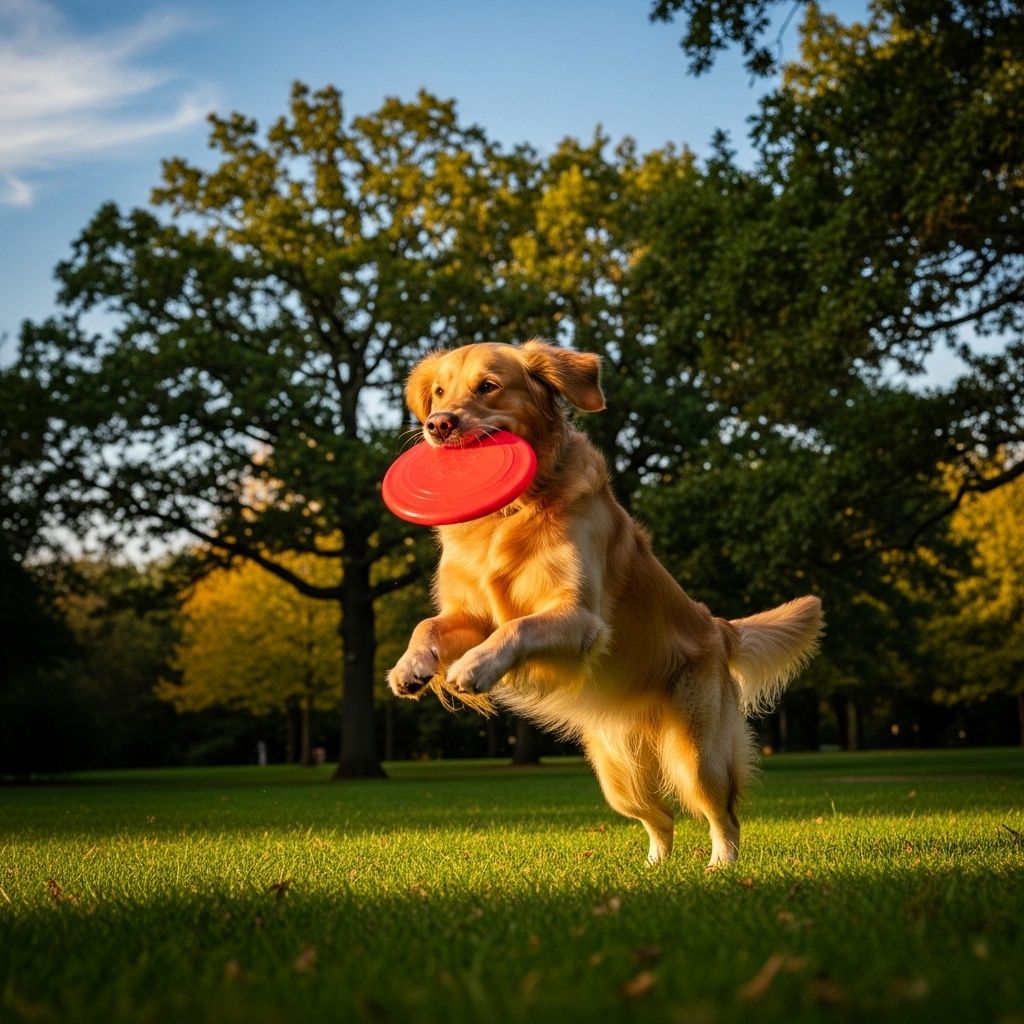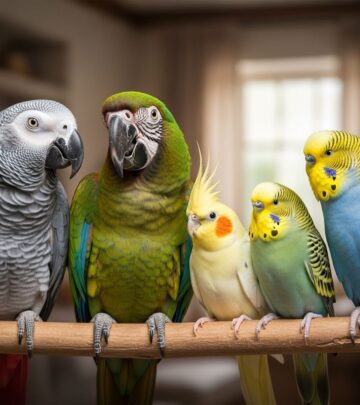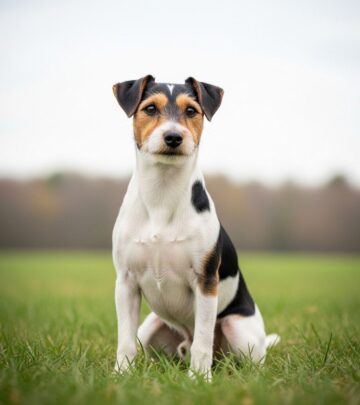How to Teach Your Dog to Fetch: A Comprehensive Guide
Play-based techniques that turn every toy chase into fun, engaging bonding opportunities.

Image: HearthJunction Design Team
How to Teach Your Dog to Fetch
Few activities match the universal joy and practical utility of teaching your dog to fetch. Whether you want a reliable playtime routine, exercise regiment, or even envision recognition through AKC Fetch titles, fetch is not just a game—it’s an essential skill fostering obedience, fitness, and deepened communication between you and your dog.
Why Teach Fetch?
- Physical exercise: Promotes healthy activity and burns excess energy.
- Mental stimulation: Engages problem-solving and quick-learning skills.
- Bonding: Reinforces your relationship through shared play and teamwork.
- Practical value: Lays the groundwork for advanced obedience, therapy, and service dog skills.
The Basics: What Is Fetch?
At its core, fetch is a two-part behavior: your dog chases an item (often a ball or toy) and returns it to you by mouth. Although some breeds have a natural retrieving instinct, most dogs benefit from clear, stepwise training to master each element of the game.
Understanding Fetch Training: Step-by-Step Approach
Successful fetch training typically involves breaking the process down into teachable stages. Here’s how to get started with your dog—even if they’ve never chased a ball before.
1. Choose the Right Fetch Item
- Select a toy or object your dog is excited about—tennis balls, soft rubber toys, or Kong Wubbas are common choices.
- For sensitive or small dogs, ensure the item is appropriate in size and softness.
- Rotate toys occasionally to sustain interest and prevent fixations.
2. Build Interest in the Toy
- Play tug or gentle keep-away to boost your dog’s drive for the toy.
- Use upbeat verbal encouragement and let your enthusiasm show.
- If your dog is hesitant, try rubbing a little treat or scent onto the toy to increase curiosity.
3. Teach the Chase
- Sit with your dog and roll the toy a short distance away.
- Encourage your dog to go after it by pointing or gently tossing the item.
- Reward any movement towards or interaction with the toy using praise or treats.
4. The Return: Building the Bring-Back Behavior
- As soon as your dog grabs the toy, call them back using recall cues (“Come!” or “Bring it here!”).
- If your dog runs off with the toy, try moving backwards or exchanging the fetch item for a treat or tug play.
- Never chase your dog; create an incentive for them to come toward you.
5. The Drop: Teaching Release on Cue
- Offer a high-value treat in exchange for the toy.
- When your dog lets go, add your release cue (“Drop it” or “Give”).
- Practice this until the release becomes predictable, then gradually reduce food rewards in favor of playing fetch itself.
Common Fetch Challenges (and Solutions)
Fetch doesn’t come naturally to every dog. Here are some specific challenges and practical solutions:
- Dog doesn’t chase the toy: Use movement and excitement to entice your dog, switch up toys, and start with short throws.
- Dog picks up the toy but doesn’t bring it back: Try running in the opposite direction, clap your hands, or use a second identical toy as a lure.
- Dog returns but won’t drop: Exchange for a treat or another toy, or practice drop-it cues independently outside fetch sessions.
- Dog loses interest quickly: Keep sessions brief and fun, end before your dog is bored, and use especially desirable toys or treats for motivation.
Advanced Fetch Skills and the AKC Fetch Program
For handlers seeking to challenge their dogs and add structure, the AKC Fetch program offers measurable goals and titles. AKC Fetch focuses on reliability, distance, and handling distractions in the retrieving process. Dogs can earn recognition across four levels: Novice, Intermediate, Advanced, and Retriever.
Overview: AKC Fetch Levels
| Level | Distance | Retrieves | Obstacles & Distractions | Handler Assistance |
|---|---|---|---|---|
| Novice | 30 ft | 3 (Right, Center, Left) | Boxes & Fun Objects | May hold collar at start |
| Intermediate | 40 ft | 4 (Chosen order; L, C, R, plus L/R) | More distractions | May hold collar with one finger |
| Advanced | 70 ft | 2 Singles, 2 Doubles | Blinds/Screens | Minimal assistance |
| Retriever | Advanced Level+ (Blinds, more complexity) | Not specified here | Helper drops object behind blind | Handler throws or helper places |
The program is open to all breeds, and titles are awarded for consistency and skill in the field. The atmosphere remains fun and supportive; the goal is to nurture a positive relationship through structured activity.
Judging and Testing
- Tests are administered by qualified AKC judges or Certified CGC Evaluators.
- Handlers receive clear instructions; for beginners, the focus is on safety, engagement, and control.
- Progressing through levels increases in difficulty and tests the dog’s ability to retrieve in more distracting environments and over greater distances.
Preparing for an AKC Fetch Test
- Practice in different environments—build reliability despite distractions.
- Ensure your dog is comfortable with the type of retrieve item specified by the rules (balls, bumpers, or certain toys).
- Teach a reliable wait or stay, as dogs may be required to hold position until the item stops moving.
- Gradually introduce obstacles and novel objects your dog will see in a testing course (boxes, yard ornaments, chairs, etc.).
Class Structure and Community Opportunities
Many clubs and trainers offer structured fetch classes based on AKC guidelines. These programs:
- Are usually set over several weeks, covering basic and advanced skills.
- Welcome purebred and mixed-breed dogs aged six months and older.
- Offer opportunities to earn official titles and ribbons if your dog is ready for testing.
Classes often begin with a humans-only orientation to establish goals, expectations, and safety protocols before dogs are included in subsequent sessions.
Troubleshooting: When Your Dog Doesn’t Get It
Every dog is unique. If standard fetch training isn’t succeeding, consider:
- Experimenting with different rewards (food, praise, alternative toys).
- Shortening sessions and ending on a high note.
- Consulting a professional trainer for persistent issues; sometimes medical or behavioral factors are at play.
Enriching the Game—Creative Variations on Fetch
- Hide and Seek: Hide the toy and have your dog use scent to locate and return it.
- Water Fetch: For water-loving breeds, retrieve toys can float and be used in safe aquatic areas.
- Obstacle Fetch: Set up small hurdles or tunnels for your dog to navigate en route to the toy.
- Multiple Fetch: Teach your dog to retrieve different objects by name, building vocabulary and discrimination skills.
Frequently Asked Questions (FAQs)
Q: What dogs are best at fetch?
A: While breeds like retrievers and spaniels often excel, any dog can enjoy fetch with patience and positive training.
Q: What if my dog only wants to keep the toy?
A: Practice trading for a treat or another toy, and reward your dog for bringing the toy close and releasing it to you.
Q: How old should my dog be to start fetch training?
A: Puppies as young as 8 weeks can begin simple fetch games, though AKC Fetch classes typically require dogs to be at least 6 months old.
Q: How can I make fetch safe for my dog?
A: Always use appropriately sized toys, avoid excessive jumping for young or aging dogs, and provide plenty of water and rest breaks.
Q: How can I find AKC Fetch classes or tests?
A: Visit the AKC website, local dog clubs, or professional trainers to find upcoming fetch events, classes, and test schedules in your area.
Conclusion: More Than a Game
By teaching your dog to fetch, you’re creating opportunities for fun, exercise, mental stimulation, and a lifelong bond. Whether you chase the joy of backyard play or the prestige of AKC titles, fetch training is an accessible and rewarding journey for handlers and canines alike. Start small, remain patient, and celebrate every retrieve—your dog’s potential is just a toss away.
References
Read full bio of Shinta












